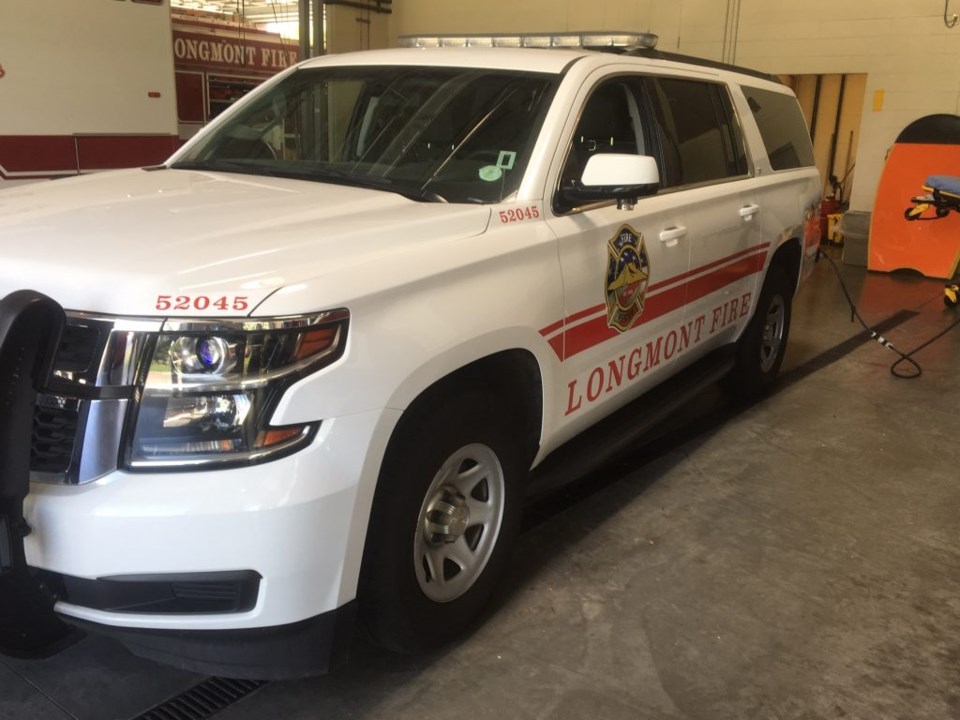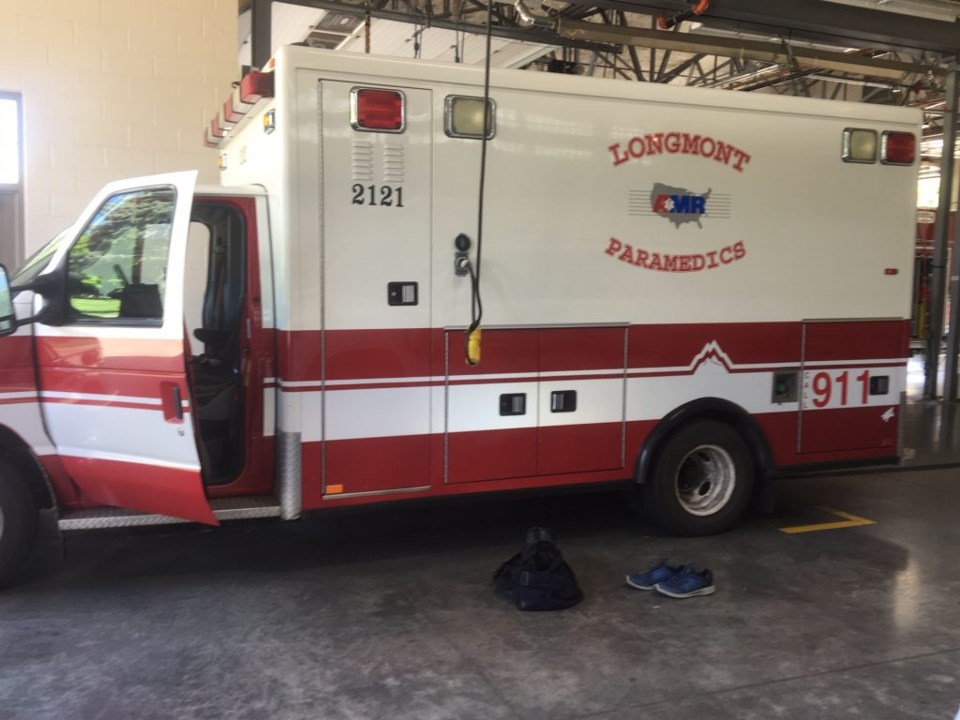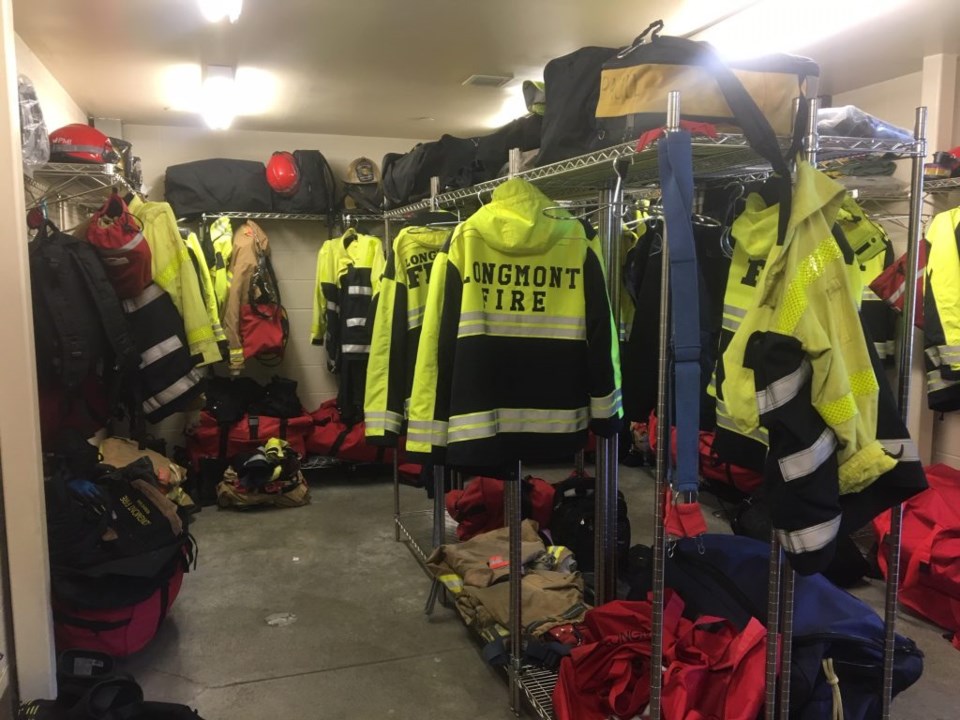This content was originally published by the Longmont Observer and is licensed under a Creative Commons license.
The Longmont Fire Department (LFD) is a leader at the local, state, and national levels in the ways they take care of the community. Not only does our fire department keep fires at bay but it also saves lives.
Uncommonly, LFD and Longmont Paramedics work as one unit. In many communities, these two public services are housed and treated as separate departments. Longmont keeps them in the same spaces, provides the same training, and even assigns roles on the scene of medical visits that allow both teams to work as one to better respond to medical emergencies.
This team effort and organization have allowed Longmont to lead the way in saving lives especially when it comes to cardiac survival rates. The national average is around 14% survival of someone who receives services from a medical call. In Longmont, the cardiac survival rate is an exceptional 46.2%.
John Michael, EMS operations lieutenant/paramedic, attributes Longmont’s success to the fire and paramedic teams' ability to work as one unit. This unit consists of eight people all working in defined roles at the same time to ensure the best outcome for patients. Additionally, Deputy Chief of Fire Services in Longmont, Jarrod Vanlandingham, stated that a large part of that success goes to the dispatch unit, who coach bystanders through CPR until medical units arrive to assist. Both Michael and Vanlandingham say that CPR initiated from bystanders and the work done by Dispatch are two of the most vital steps in cardiac survival.
Finding effective methods to deal with a situation is not limited to services at LFD. Not all the calls received by LFD require the use of an entire large fire truck. When the fire and paramedic teams are called on less serious incidents it doesn’t always make sense to send out the large fire engines, states Firefighter Jason Allison.

In these situations, LFD has begun using fewer crew members and smaller trucks to respond to low acuity calls. This reduces the fuel and resources needed to respond to these calls while providing the right amount of care. In an instance that the team arrives on-site and finds more assistance is needed, the rest of the team is just a call away and can be there with all the additional resources needed to respond appropriately.
Currently, this idea is demonstrated with the omega truck. The idea will soon expand to include the alpha car. The omega truck responds to calls such as helping residents with beeping smoke detectors. The alpha car will respond similarly to minor medical calls.
In addition to finding new and innovative ways to reduce resources consumed while serving the community, LFD works with community members to create community programs. This includes open houses, community outreach, visiting schools, and partnering with community organizations to ensure the safety of the community.
A few years ago, LFD teamed with Meals on Wheels to install lockboxes at the residences of people receiving Meals on Wheels services. “It was an initiative idea suggested by Meals on Wheels,” says Assistant Fire Chief, Dan Ditirro.
Meals on Wheels drivers would often become concerned when residents didn’t answer the door. Having a lockbox on the premises allows LFD to enter the property when they feel it is a medical necessity without breaking windows or doors.
Lockboxes are only available at residences where the property owner has agreed and filled out the appropriate paperwork. The code for the boxes are kept on file with LFD and no one else, including the homeowner, is given the code. “This is to prevent homeowners from loaning out the key and not returning it to the box,” says Ditirro.

Longmont Fire and Paramedics work hard to keep the city of Longmont safe and healthy. “We are always trying to work ourselves out of a job through prevention and education,” says Vanlandingham.
However, working themselves out of a job isn’t a reality right now. In 2018, the organization ran approximately 12,000 calls for service which equates to about 21,000 unit responses as many incidents require multiple units to handle the task. This volume of calls can create stress and wear on paramedics and firefighters. Longmont Public (LPS), as a whole, strives to provide services and support to staff.
These jobs can be stressful and hazardous to the health and well being of these men and women. In fact, cancer, cardiovascular disease, and suicide are the leading causes of death among firefighters across the country.
LPS addresses the concern of personal stress that these service people undertake by providing special training within each unit for at least one member to be able to recognize the symptoms of strain on another team member. These individuals encourage their teammates to seek professional help or simply provide them with the appropriate resources needed. This may include seeking the services of the on-staff psychologist at LPS.
But it isn’t just the mind that LFD is concerned about. They worry about the body as well. Each firefighter and paramedic is allowed at least one hour of the workday for physical training. Each year all staff participate in a physical assessment to ensure they are able to continue with their duties.

As cancer is a major concern to firefighters, LFD takes extra precautions. This includes simple things like wiping down their bodies after a service call, having a second set of gear, maintaining separation between where their gear is and their living space, and washing their gear in dedicated machines.
These practices help decrease the amount of time these men and women are exposed to the toxins they encounter, providing them with the possibility of a healthier life.
The efforts displayed by the Longmont Fire Department to ensure the safety of its staff do not go unnoticed across the country. Leaders within the LFD have been asked to travel to and teach other departments the practices our fire department undergoes daily. Additionally, one of our own is in the process of helping a company design and improve new firefighter gear.
As Deputy Chief Vanlandingham said, "we are always trying to work ourselves out of a job through prevention and education." That education is not just educating the community but educating themselves and others on the best practices in the services offered.


